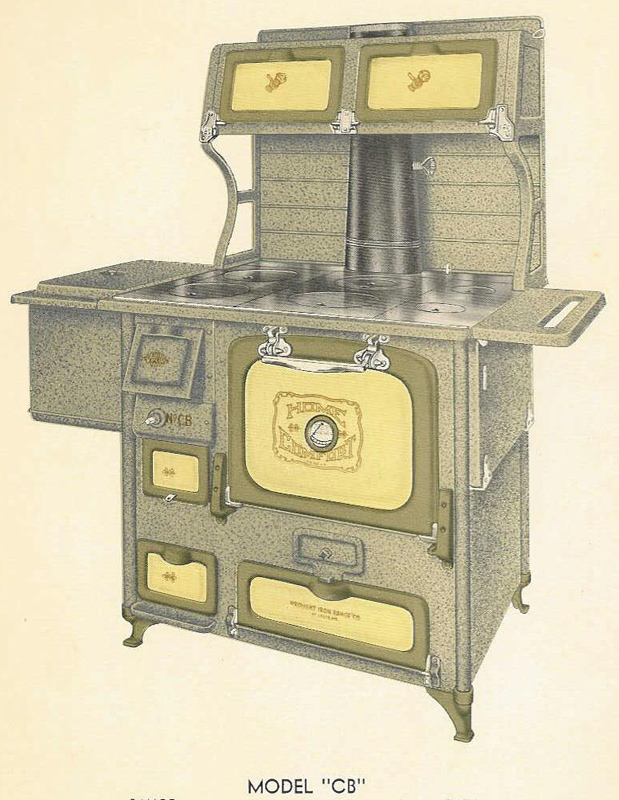|
Moderated by NW Okie! |
Volume 13 , Issue 72011Weekly eZine: (375 subscribers)Subscribe | Unsubscribe Using Desktop... |
Home Comfort Range (1934) - Pastry Recipes

This week we promised you some pastry recipes from our Home Comfort Cookbook of 1934.
The 1934 Home Comfort Cookbook says, "Shell pastry which is to contain a cooked filling -- as for single-curst pies and cup pastries -- is baked before the filling is placed into it. If for raw or uncooked filling such as custard, the shell and filling are cooked at the same time. The pastry is lightly place in the pan in the usual manner, but is trimmed about an inch away from the rim of the pan, and this margins folded back over the edge, and scalloped, or fluted, with the fingers, to form a rigid rim around the inside of the crust."
It is necessary, in making shell and flat pastries, to provide for the escape of excess air while baking, thus preventing bubbles; after the paste is place in the tin, puncture at regular spacing with the prongs of a fork. Top crusts of pies should always contain a few perforations with the point of a knife to allow escape of any steamer vapor.
Pies should never be allowed to set after being assembled, but should be placed in the hot oven at once. For this reason, always have the oven prepared before putting the pie together. For the same reason, the upper-crust paste should be rolled out and ready to put in place before the filling is placed in the lower crust.
Avoid undertaking of all pastry, as it will be heavy and rendered less digestible.
Plain Pastry (basic recipe)
No. 1 -- Quantity for one nine-inch pie shell; double for two shells.
1 cup sifted pastry flour
1/2 teaspoon fine salt
4-1/2 tablespoons shortening
cold water to moisten
No. 2 -- Quantity for one nine-inch double crust, or two lower.
2 cups sifted pastry flour
3/4 teaspoon fine salt
8 tablespoons shortening
cold water to moisten
Have all ingredients of the same temperature. Add salt to flour and resift; add shortening and cut in with two knives until mixture has appearance of coarse meal; add water, spoonful at a time while mixing with a knife or spatula into a stiff paste -- just when the paste rolls into a ball and cleans the bowl o flour and paste, enough water has been added. Lightly transfer paste to a slightly floured board; do not knead, but with floured fingers form quickly and lightly into dough; roll out lightly from the center outward, spreading into desired thickness.
If bread flour is to be used, remove 1 tablespoon from each cup called for in pastry flour recipe.
When No. 1 is to be used for extremely juicy fillings, leave out 1/2 tablespoon of shortening. All measurements are level.
When No. 2 is used, divide the dough in half and roll our each crust separately.
| View or Add Comments (0 Comments)
| Receive
updates ( subscribers) |
Unsubscribe
| © . Linda Mcgill Wagner - began © 1999 Contact Me | |
